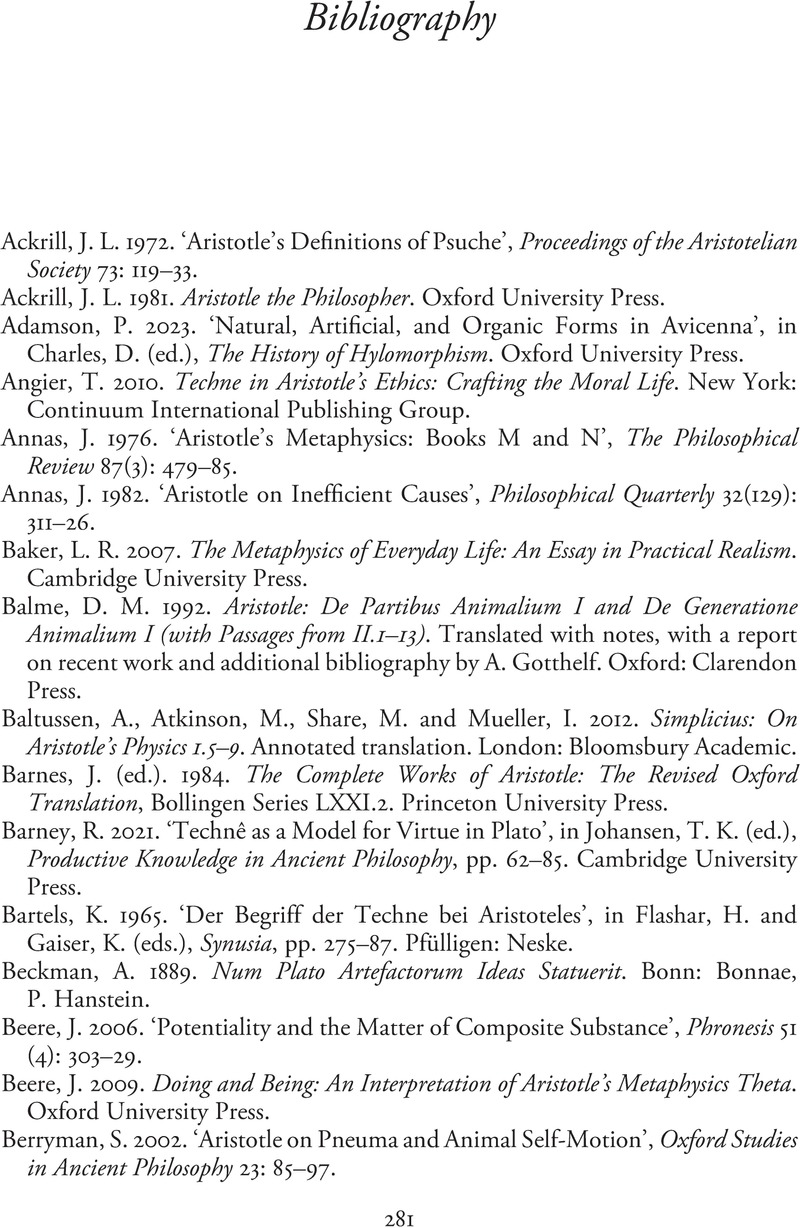Book contents
- Aristotle’s Ontology of Artefacts
- Aristotle’s Ontology of Artefacts
- Copyright page
- Dedication
- Contents
- Figures
- Acknowledgements
- Abbreviations
- Introduction
- Chapter 1 The Platonic Heritage
- Chapter 2 Using Artefacts against Plato
- Chapter 3 Aristotle’s Building Blocks in the Physics
- Chapter 4 Artefacts as Hylomorphic Compounds
- Chapter 5 Forms of Artefacts as Inert and Intermittent
- Chapter 6 The Relation between Matter and Form in Artefacts
- Chapter 7 The Relation Between Parts and Whole in Artefacts
- Chapter 8 The Physics and Metaphysics of Artefacts
- Conclusions
- Bibliography
- Index Locorum
- Subject Index
- References
Bibliography
Published online by Cambridge University Press: 14 December 2023
- Aristotle’s Ontology of Artefacts
- Aristotle’s Ontology of Artefacts
- Copyright page
- Dedication
- Contents
- Figures
- Acknowledgements
- Abbreviations
- Introduction
- Chapter 1 The Platonic Heritage
- Chapter 2 Using Artefacts against Plato
- Chapter 3 Aristotle’s Building Blocks in the Physics
- Chapter 4 Artefacts as Hylomorphic Compounds
- Chapter 5 Forms of Artefacts as Inert and Intermittent
- Chapter 6 The Relation between Matter and Form in Artefacts
- Chapter 7 The Relation Between Parts and Whole in Artefacts
- Chapter 8 The Physics and Metaphysics of Artefacts
- Conclusions
- Bibliography
- Index Locorum
- Subject Index
- References
Summary

- Type
- Chapter
- Information
- Aristotle's Ontology of Artefacts , pp. 281 - 293Publisher: Cambridge University PressPrint publication year: 2023



